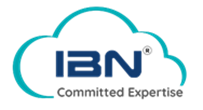Q1: What is IT Compliance Reporting?
A1: IT Compliance Reporting refers to the process of documenting and communicating an organization's adherence to regulatory requirements, industry standards, and internal policies related to information technology (IT).
Q2: Why is IT Compliance Reporting important?
A2: IT Compliance Reporting is essential for demonstrating that an organization follows established rules and standards. It helps build trust with stakeholders, ensures legal and regulatory compliance, and mitigates risks associated with data breaches and other IT-related incidents.
Q3: What are common regulatory frameworks for IT compliance?
A3: Common regulatory frameworks for IT compliance include GDPR (General Data Protection Regulation), HIPAA (Health Insurance Portability and Accountability Act), PCI DSS (Payment Card Industry Data Security Standard), SOX (Sarbanes-Oxley Act), and various industry-specific regulations.
Q4: What types of information are included in IT Compliance Reports?
A4: IT Compliance Reports typically include details about security policies, risk assessments, access controls, data protection measures, incident response procedures, and evidence of adherence to specific regulatory or industry requirements.
Q5: Who are the primary audiences for IT Compliance Reports?
A5: The primary audiences for IT Compliance Reports include regulatory authorities, auditors, executive leadership, customers, and other stakeholders interested in understanding how an organization manages and protects its IT assets.
Q6: What is the role of IT Compliance Officers in the reporting process?
A6: IT Compliance Officers play a crucial role in overseeing and managing IT compliance initiatives. They are responsible for ensuring that the organization's IT practices align with applicable regulations, standards, and internal policies and that this alignment is accurately reflected in compliance reports.
Q7: How often should IT Compliance Reports be generated?
A7: The frequency of IT Compliance Reporting varies based on regulatory requirements, industry standards, and internal policies. In many cases, organizations generate reports annually, while some regulations may require more frequent reporting.
Q8: What challenges are associated with IT Compliance Reporting?
A8: Challenges may include keeping up with evolving regulations, ensuring accurate data collection, managing the complexity of IT environments, addressing resource constraints, and adapting to changes in the organizational structure or technology landscape.
Q9: Can IT Compliance Reporting be automated?
A9: Yes, IT Compliance Reporting can be automated using specialized software solutions. Automated tools can streamline data collection, generate reports, and provide real-time visibility into an organization's compliance status.
Q10: How can organizations improve their IT Compliance Reporting processes?
A10: Organizations can improve IT Compliance Reporting by regularly updating policies and procedures, conducting thorough risk assessments, investing in automation tools, providing ongoing staff training, and engaging with external experts for audits and assessments.

